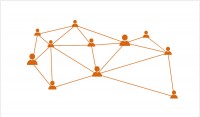In this paper, we will be giving a short overview of the ideas of rationality and bounded rationality as they apply to the decision making of economic agents. We firstly look at the standard model of the rational agent where value is defined subjectively in terms of utility; where agents have well-defined unchanging preferences, perfect information and choice making is seen as an optimization process. We go on to look at the contrasting model of bounded rationality where agents may have a diversity of motives; where they exist in a complex world, always embedded within space and time with limited information and cognitive capabilities, often facing radical uncertainty; wherein their choices are more a product of how they are contextualized and framed, both physically, socially and culturally as they imitate others, use heuristic shortcuts or create narratives to aid them in their decision-making process.
In many ways, the divide between standard economic models of the rational agent and behavioral economics models of bounded rationality is a divide within economic science between theory and empirical data. On the micro level, standard economic theory has never really been subjected to empirical data. Models derived from classical physics got mathematized during the 20th century into very quantitative abstract and theoretical representations of human behavior with limited reference to empirical data. The emphasis was on formalizing equation-based models. Empirical data was seen as somewhat redundant.
Over the past few decades, researchers in neuroscience, psychology and new areas of economics have started to conduct experiments and it has turned out that the data coming from these experiments does not fit very well with the standard models. In order to try and describe what is coming out of the data, behavioral economics has grown as an alternative approach pursuing more experimental, data-driven methods, without reference to the more traditional models, and some very interesting insights have come out of this. Complexity theory is very well suited to supporting this new approach to microeconomics as much of this empirical phenomena can be best understood with reference to nonlinear models.







